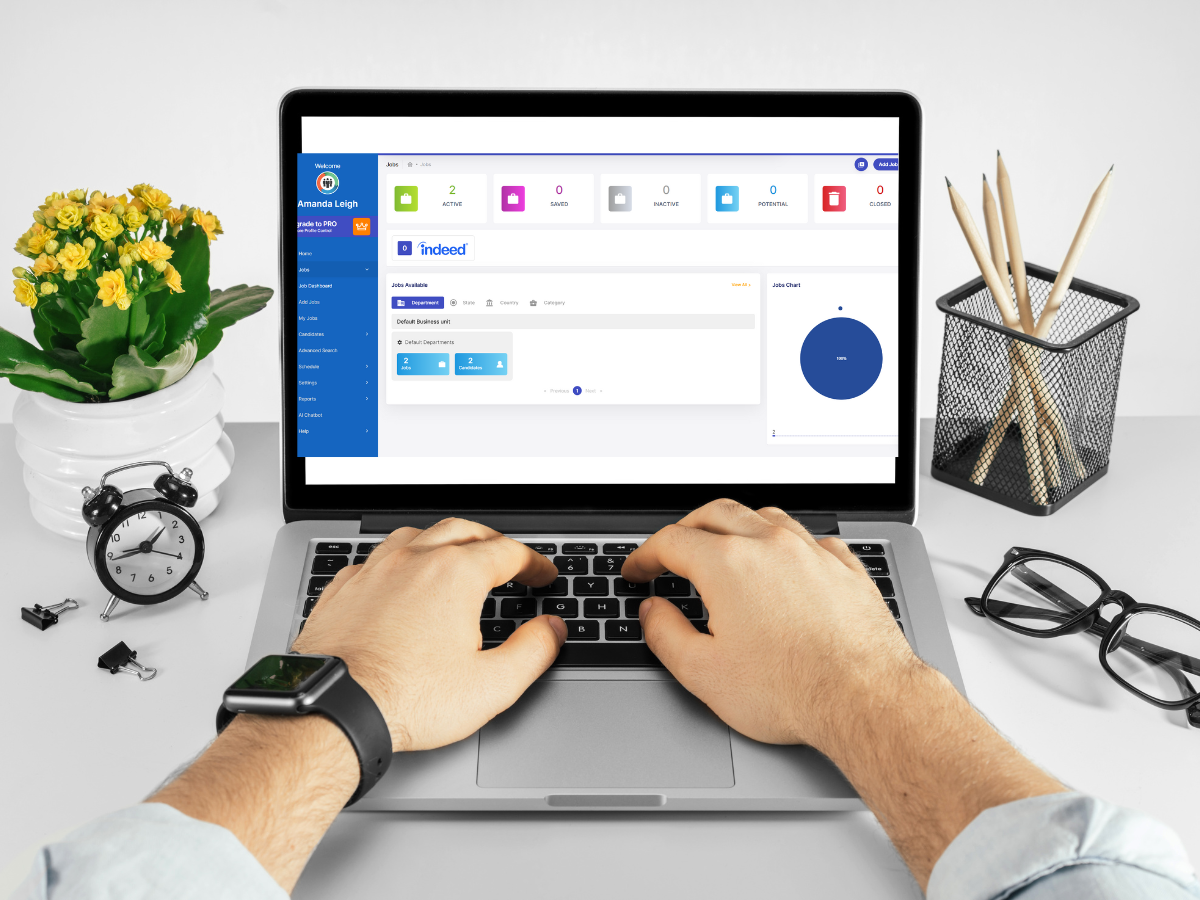Reducing candidate drop-off rates is a crucial goal for recruiters, as high drop-off rates can signal inefficiencies in the application process and lead to the loss of potentially great talent. Candidate drop-offs often happen when applicants lose interest or become frustrated with the application process, unclear expectations, or lack of communication. By addressing the causes of drop-offs and implementing strategies to improve the experience, recruiters can retain top candidates and improve their hiring outcomes.
1. Streamline the Application Process
The application process is often the first interaction between candidates and an organization, making it an essential touchpoint. However, lengthy and complicated procedures can deter potential applicants, lead to lost opportunities, and create inefficiencies. Streamlining the application process is key to improving candidate experience and ensuring that both applicants and organizations can move forward with ease.
Enhancing User Experience: A simplified application process allows applicants to navigate the steps with ease, leading to higher satisfaction rates.
Reducing Drop-Off Rates: Complicated or time-consuming applications can cause potential candidates to abandon the process midway. A streamlined application reduces drop-offs.
Increasing Efficiency: By automating and simplifying key steps, organizations can cut down on administrative work, enabling quicker decision-making.
Attracting High-Quality Candidates: A seamless application process is appealing to top candidates who are likely to be evaluating multiple opportunities.
Saving Time and Resources: Both applicants and organizations can save time by focusing only on necessary steps, reducing delays, and minimizing administrative overhead.
2. Improve Communication Throughout the Process
Improving communication throughout the application process is essential for maintaining transparency, enhancing the applicant experience, and ensuring that the organization operates efficiently. Clear, timely, and consistent communication helps to build trust and reduce uncertainty for applicants, while also providing valuable feedback and updates for the organization. Here’s how to improve communication at every stage of the application process:
Initial Acknowledgment: As soon as an applicant submits their application, send an acknowledgment email or message confirming receipt. Let them know their application is under review and provide a timeline for the next steps.
Status Updates: Send regular updates to applicants about where they stand in the process. Whether it’s confirmation that their application is being reviewed or a reminder of upcoming deadlines, keeping them in the loop builds confidence and reduces anxiety.
Tailored Emails: Avoid generic communication. Address applicants by name and tailor messages to their application stage (e.g., interview invites, rejection notices). Personalized communication makes applicants feel valued and helps foster a positive experience, even if the outcome is not favorable.
Clear Deadlines: Be explicit about deadlines for submitting applications, documents, or other materials. If there are any changes in the timeline, communicate them immediately to avoid confusion.
Emails, Texts, and Calls: In addition to email, consider using other communication methods like text messages or phone calls for urgent updates or interview invitations. Ensure that applicants have multiple ways to contact your team if they have questions or concerns.
Detailed Instructions: If applicants need to submit additional documents, complete tests, or take any other actions, make sure they understand exactly what’s required. Provide clear instructions on how to complete each step, where to submit files, and what format is needed.
3. Offer Transparency in Job Descriptions and Requirements
Offering transparency in job descriptions and requirements is a critical practice that helps organizations attract the right candidates, reduces misunderstandings, and fosters a positive hiring experience. Clear and honest job descriptions ensure that both applicants and employers are aligned in their expectations, reducing the risk of mismatches or dissatisfaction down the line.
4. Enhance the Interview Experience
Confirm the Interview Details: Send a confirmation email or message as soon as the interview is scheduled, including all relevant details: the date, time, location (or video link if remote), the format of the interview, and who the candidate will be meeting with. This reduces confusion and helps the candidate prepare.
Warm Introduction: Start the interview with a warm welcome. Introduce yourself and other interviewers if applicable, and share a little about the company and what you do. This makes the candidate feel more at ease and sets a positive tone for the conversation.
Avoid Overly Lengthy Interviews: Long interviews can lead to candidate fatigue and disengagement. Try to keep interviews within a reasonable time frame (typically 30-60 minutes) unless a longer discussion is absolutely necessary. Be mindful of the candidate’s time.
Discuss Career Growth: Share opportunities for advancement and professional development within the company. Candidates are more likely to be engaged if they see potential for growth in the role and organization.
Talk About the Team: Share information about the team the candidate would be working with, the leadership style, and how the role fits within the broader organizational structure. This helps candidates envision themselves in the role and understand how they will contribute to the organization.
Timely Communication: After the interview, inform candidates of their status as soon as possible. If you’re still evaluating candidates, keep them updated about the timeline. If they were unsuccessful, provide polite, constructive feedback. If they are successful, offer clear instructions for the next steps.
5. Engage with Candidates Beyond the Process
Engaging with candidates beyond the interview process is an important strategy that can help strengthen relationships, build your employer brand, and ensure that top candidates remain interested in your organization. Many recruiters focus on the application and interview stages, but candidate engagement should extend beyond the hiring process to create a lasting, positive impression. This ongoing engagement is critical, as it can lead to future hires and referrals, even if a candidate isn’t selected for the current role.
6. Utilize Technology for Candidate Experience
An Applicant Tracking System (ATS) like ReadyATS can significantly streamline the recruitment process by automating many tasks, improving efficiency, and helping recruiters manage large volumes of applications. Striking the right balance between automation and personalized communication is key to leveraging the benefits of ReadyATS while maintaining a human touch throughout the hiring journey.
Our Takeaway
Reducing candidate drop-off rates requires a combination of clear communication, process optimization, and a focus on candidate experience. By simplifying the application process, providing transparency, and ensuring smooth and respectful communication throughout, recruiters can increase engagement, maintain candidate interest, and ultimately hire top talent more efficiently. Continuous feedback and process refinement ensure that your recruitment funnel remains attractive and efficient, leading to better outcomes for both candidates and your organization.




